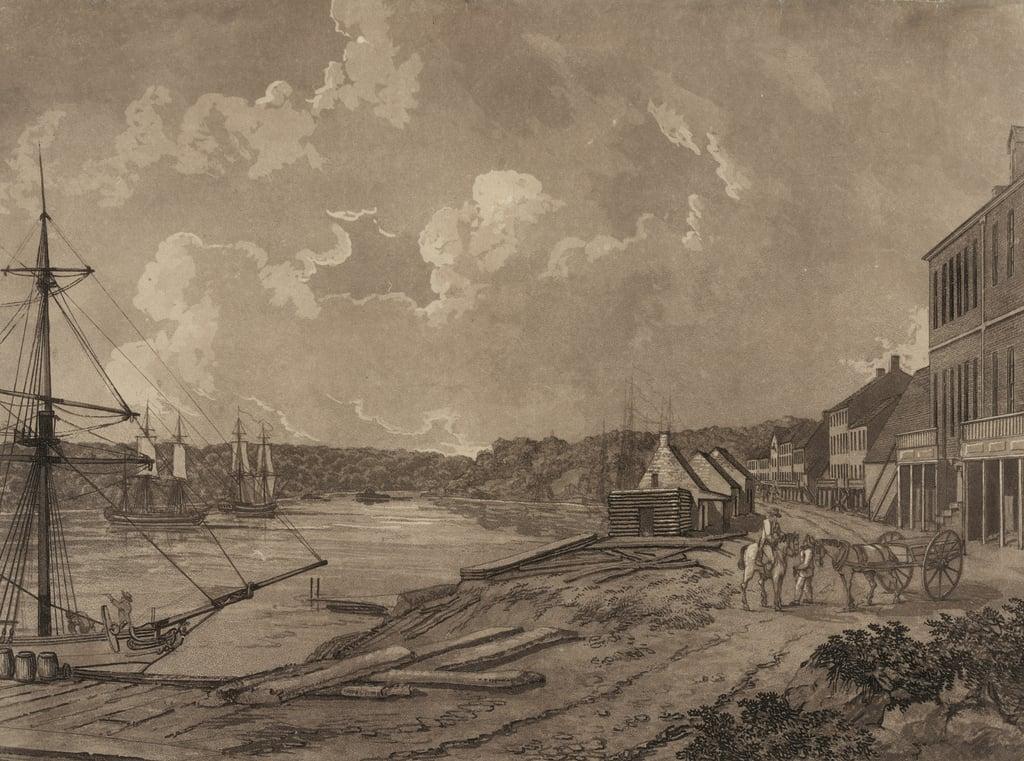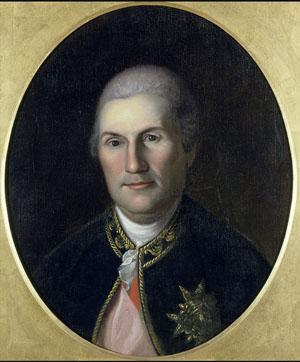Washington-Rochambeau Revolutionary Route

In March 1780, King Louis XVI approved the “expédition particulière,” which sent French troops to the United States.
In March 1780, King Louis XVI approved the “expédition particulière,” which sent French troops to the United States. The general in charge of the mission was Jean-Baptiste Donatien de Vimeur, comte de Rochambeau. The resulting 680-mile joint expedition led to the dramatic October 19, 1781, victory of American and French forces over British troops at Yorktown.
General Rochambeau arrived in Newport, Rhode Island, on 11 July 1780, at the head of an army of 450 officers and 5,300 men. These troops had crossed the Atlantic on a fleet under the command of Admiral de Ternay consisting of seven ships of the line, two frigates, two smaller warships, and 32 transports, with crews totaling about 7,000 sailors.
The first meeting of General George Washington and General Rochambeau occurred in September 1780 in Hartford, Connecticut. General Washington proposed a plan to attack British-occupied New York City. However, the late arrival of French forces, combined with the lack of funds, food, and supplies of the Continental Army, made this plan impossible. As a result, both armies decided to wait until the following spring to resume military operations.
In May of 1781, General Washington and General Rochambeau recognized that the new objective should be British forces under General Cornwallis in Virginia. This decision was prompted by Lord Cornwallis's movement of his British troops from Richmond, Virginia, to Yorktown.
Once the decision was made to march to Virginia, allied army staff had four days to prepare. The logistics of finding a route, identifying possible encampments, and securing supplies were urgent. The movement of such a large number of troops was a feat, but it also had to be secret to not alert the British forces in New York City.
On 18 August 1781, the march to Yorktown began. The French Army formed two columns and the Continentals a third, all crossing the Hudson River at King’s Ferry to Stony Point. Once in New Jersey, the Continental Army formed two columns, while the French began a single column the farthest inland to protect them from British view.
The movement of the two armies was a challenging task. In addition to the troops, the wagon train alone consisted of 239 hired wagoners and wagon conductors, 15 (mostly female) cooks, and 210 wagons drawn by 1,200 oxen. One of the most significant transportation problems was fording rivers and other bodies of water.
On September 14, 1781, the French troops arrived in Georgetown and crossed the Potomac River into Arlington. They marched along the river and are known to have used Arlington Ridge Road, passing by the location of the Hume School and the Arlington Historical Society Museum. The French are believed to have camped near Four Mile Run and Route 1.
On 28 September 1781, the allied armies arrived in Yorktown, where Cornwallis and the British Army were cornered. Once the siege started, the end was inevitable. On October 19, 1781, the British troops and American loyalists marched out of Yorktown to lay down their arms. Cornwallis had surrendered, and the Allied armies were victorious.
Images




